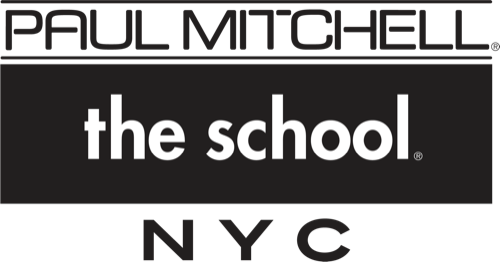Cosmetology Course Descriptions
COSMETOLOGY: Standard Occupational Classification (SOC) 39-5012.00, Classification of Instructional Programs (CIP) Code 12.0401
The curriculum involves 1000 hours to satisfy New York state requirements. The course includes extensive instruction and practical experience in cutting, hair coloring, perming, customer service, personal appearance and hygiene, personal motivation and development, retail skills, client record keeping, business ethics, sanitation, state laws and regulations, salon-type administration, and job interviewing.
*Graduates are prepared to be entry-level cosmetologists.
This program is taught in English. Textbooks and Course Materials are only offered in the English Language.
COSMETOLOGY COURSE OVERVIEW
Course Hours: 1000 clock hours
The course is divided into pre-clinical classroom instruction and clinical service learning experiences.
- Pre-clinical Classroom Instruction: The first 200 hours are devoted to classroom workshops where students learn design principles, technical information, and professional practices.
- Clinic Learning Experience: The remaining 800 hours are spent in the clinic classroom area where practical experience is gained.
COSMETOLOGY COURSE OUTLINE
Your time at Paul Mitchell the School NYC for the cosmetology program will be divided into six (6) designations:
- Core Curriculum: A 200-hour orientation, known as the Core program, instills the basic fundamentals. Students are graded and evaluated using written, oral, and practical testing methods. Students must successfully complete the Core curriculum prior to attending regularly scheduled daily classes in cutting, coloring, permanent waving, and chemical texture services.
- Clinic Classroom Learning Experience: Your clinic time from 200 to 1000 hours will be guided with individual attention and group learning experiences using mini-classes, clinic classroom worksheets, and periodic evaluations developed specifically for this monitoring progress. This is when you begin experiencing your clinic classroom education on paying clients in the clinic classroom area.
- Classroom Learning Experience: Your classroom time from 200 to 1000 hours is divided into five (5) areas: cutting, coloring, texture, makeup, and nails. Each area has an instructor who conducts the different specialty classes week. Classroom Learning Experiences may also include retail, motivation, self improvement, professional development, and attendance education which may be conducted by an instructor, non-licensed staff member or guest artist.
- Adaptive Curriculum: From 280 to approximately 600 hours you will enter a new phase of specialty classroom workshops coupled with challenging practical services designed to continue building you into a beauty industry professional.
- Creative Curriculum: You will spend your last approximately 750 hours at Paul Mitchell the School NYC in “high gear” by dressing, acting, and working like a beauty industry professional. You will use your own artistic and creative abilities, coupled with the assistance of the Learning Leaders, to prepare yourself for your future beauty industry career.
During the creative curriculum you will have the option to apply to be in our Phase II honors program. This is open to all who meet the criteria. Future Professionals must have an academic average of 90% or higher, exceptional attitude, and above a 90% attendance. Future Professionals must apply by submitting a resume and be interviewed by our education team. In Phase II, Future Professionals will have the opportunity to mimic the true salon environment. This means they are held to higher standards such as speed and creativity. They will have the opportunity to work in a designated area in the clinic area.
COSMETOLOGY COURSE SUBJECTS
The instructional program of Paul Mitchell the School NYC meets or exceeds the state requirements:
| Requirements | Total Clock Hours |
|---|---|
|
Professional Requirements
|
24 |
|
Safety and Health
|
26 |
|
Anatomy and Physiology
|
15 |
|
Hair Analysis
|
10 |
|
Hair and Scalp Disorders and Diseases
|
10 |
|
Chemistry as applied to Cosmetology
|
5 |
|
Shampoos, Rinses, Conditioners and Treatments
|
30 |
|
Haircutting and Shaping
|
175 |
|
Hairstyling
|
245 |
|
Chemical Restructuring
|
180 |
|
Hair Coloring and Lightening
|
180 |
|
Nail Care and Procedures
Overlay Wrapping; Repair, Maintenance and Removal
|
40 |
|
Skin Care and Procedures
|
60 |
| Hours required by NYS Regulations | 1000 |
The institution offers employment assistance to help graduates’ efforts to secure education-related employment that includes, but is not limited to training in professionalism, resume’ development, job interview preparation and job search skills.
COSMETOLOGY PROGRAM TESTING AND GRADING PROCEDURE
- Academic theory exams: Students must receive a grade of 80% or higher on each assigned theory exam.
- 200-hour orientation practical skills evaluation test: Students must receive a grade of 80% or higher. If a student fails to pass this evaluation test on their second attempt, they may be asked to withdraw and re-enroll in the next Core class start date.
- Final exam 1: This test covers an overview of all related cosmetology subjects (e.g., anatomy, chemistry, etc.). Students must receive a grade of 80% or higher on all final exams.
- Final exam 2: The written exam covers an overview of all theory instruction, New York state law, and other items covered on the state cosmetology exam. Students must receive a grade of 80% or higher on all final exams.
- Clinic Practical Skill Assessment: Future Professionals progress in practical skill assessments and theory hours will be digitally monitored on a weekly basis by the Future Professional Advisor using Course Key app. All assignments must be completed in order to complete the program.
COSMETOLOGY INSTRUCTIONAL TECHNIQUES AND METHODS
The 1000 cosmetology programs are provided through a sequential set of learning steps which address specific tasks necessary for State Board preparation, graduation, and job entry level skills. Clinic equipment, implements and products are comparable to those used in the industry. Each student will receive instruction that relates to the performance of useful, creative and productive career-oriented activities. The course is presented through well-developed lesson plans that reflect the latest educational methods. Subjects are presented by means of lectures, demonstration, distance education, and student participation. Audio-visual aids, guest speakers, field trips, and other related learning methods are used in the course.
